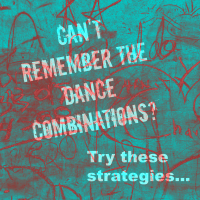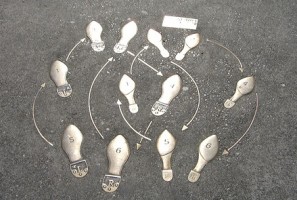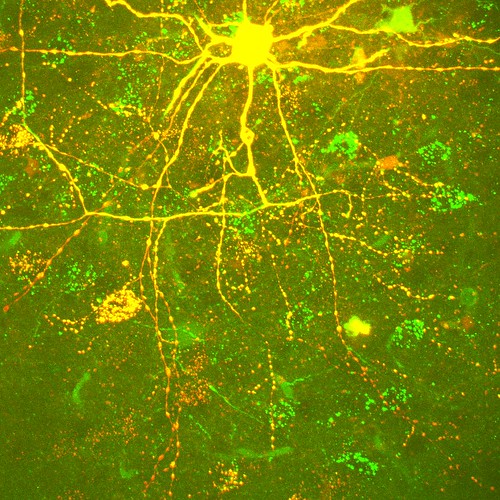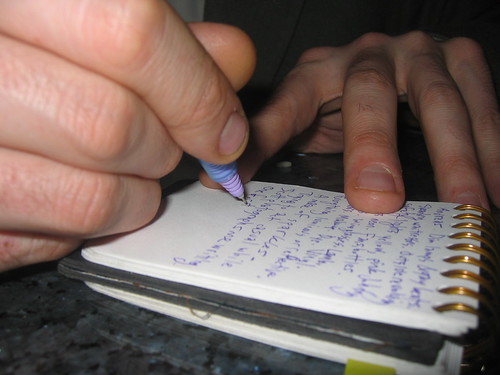 Ever have trouble remembering what comes next in a dance?
Ever have trouble remembering what comes next in a dance?
One of the common struggles students face in class is recalling the sequence of choreography. Particularly, if you are a beginning student, you may not have yet developed the tools needed to quickly retain passages of movement. Everyone is different and you will need to find what works for you. The following are just a few techniques you might try the next time your teacher gives a combination.
Look for the Pattern

Choreography is not typically one, long, string of unrelated movements, though when it is given more quickly than you are used to, it can seem so. Generally you will be shown a sequence more than once. If you’re struggling to keep up with the rush of information coming your way, it may help to focus on the pattern first and worry about the movement second.
The pattern may relate to number of repetitions. For instance, 4 front, 4 side, 2 front, 2 back, 1 front, 1 side, 1 front, 1 back — it may seem an odd pattern, but if you’ve retained at least this, filling in the blanks will be easier. Patterns may also be directional. Perhaps the choreography travels to the down-stage corner, faces upstage, downstage, then moves stage right.
Focus on One Aspect of the Choreography
Pattern is just one element of choreography. You might also choose to focus on other components, one at a time, to construct the sequence in your body and mind. For example, try focusing your attention on the feet alone if combining the arms, head, and rhythms all at once is proving to be too much information. This doesn’t mean you have to leave the other elements out altogether. Do what you can, but give yourself permission to let one thing go for the sake of absorbing the details of another. You can always layer the movements with more detail as you go.
Attach a Visual Image
Sometimes attaching a mental image to a step or series of steps can help you to put things in order. The movement’s name may offer clues – for instance Pas de Chat is “step of the cat.” This swift jump directly relates to the pounce of a feline. However, sometimes movements don’t have names or at least not ones that correspond to an image. So, it’s okay to attach your own visuals and/or terminology… no matter how strange.
What does each movement or series of steps bring to mind? Maybe your sequence looks like this: chopping vegetables, waves crashing, popcorn, ice skating. As long as the images make sense to you, you will likely be able to keep these images in order, aiding your memory of the choreography itself.
Write it Down
Sometimes the act of writing, or seeing words or sketches on a page can solidify a chain of movement, particularly if there will be some time before your next class or rehearsal. You might try writing down the choreography (in whatever way suits you) as soon as possible after your class. This is not a technique that works for everyone and I have seen students get too attached to their new “cheat sheet. ” The key is remembering that this device is capturing memories you have not creating memories where there are none. The choreography is already stored in your body, putting it on the page is just mental repetition.
Repetition
Speaking of repetition, there are lots of ways you might apply this prominent memory device. Though practicing “full-out” is most helpful, “marking” the movement can also be beneficial. Try marking as much as you can as the teacher demonstrates the combination or, whenever there are spare and appropriate moments during the class – while the first group performs, while the teacher is working independently with someone else, etc.
When there is a moment in the sequence that you trip or get stuck on each time it is performed. Try performing the movement prior, the problem spot, and the moment following, three or more times in a row. Then perform the whole thing again. You may find that this helps to correct the gap in memory you’ve been experiencing.
Also, never underestimate both mental (i.e. visualizing the choreography) and physical practice. This kind of repetition not only solidifies your memories but will bring to light the segments of the combination that seemed clear in class but are trouble spots in your memory.
Sing the Rhythm
Sometimes thinking of dance as a rhythm or melody can assist your recollection of the choreography. Your movement may alreay by set to music, however, the dance itself has a rhythm or phrasing. Try to focus on this and even “sing” it to yourself as you move or recall the movement. Many teachers do this when teaching the movement. It’s very common in tap (Shelly Oliver does it about 20 seconds into the video below) but it is certainly possible in other styles.
[youtube=http://www.youtube.com/watch?v=1hAIgMmoixY]
No matter what strategies you use to remember choreography…
Don’t Rely Too Much on Others
Many students will depend heavily on the teacher or other students when performing movement. I like to call this “brain-sucking” because when you do this you are leeching the movement sequence from someone else without actually retaining much of it in your own brain. The danger of this is that when that person is no longer performing the choreography or makes a mistake, you will be unable to perform accurately. When attempting the choreography after it has been given, try to keep your focus off of those around you – looking ahead or changing your focus as required in the choreography. A little brain-sucking is normal, however, I find that most students don’t need to do it as much as they think, which brings me to…
Trust Your Motor Memory

Your brain and body have an amazing capacity to “remember” movement patterns, pathways, and relationships. The mechanics and neuroscience of this is not completely understood. Like all skills, however, motor memory (sometimes referred to as muscle memory), seems to be learned and improved through practice and experience. As you are learning, it pays to trust these neuromuscular systems to do their work. Do not let lack of confidence or “overthinking” undermine the relatively natural process that your mind and body go through as you learn and practice choreography. Replace negative thoughts with positive and affirming ones.
Want more great tips?
Here are our top secrets, plus some awesome movement memory games.
Do you use other memory devices for recalling choreography?
What strategies can you share?
Nichelle Suzanne is a writer specializing in dance and online content. She is also a dance instructor with over 20 years experience teaching in dance studios, community programs, and colleges. She began Dance Advantage in 2008, equipped with a passion for movement education and an intuitive sense that a blog could bring dancers together. As a Houston-based dance writer, Nichelle covers dance performance for Dance Source Houston, Arts+Culture Texas, and other publications. She is a leader in social media within the dance community and has presented on blogging for dance organizations, including Dance/USA. Nichelle provides web consulting and writing services for dancers, dance schools and studios, and those beyond the dance world. Read Nichelle’s posts.


